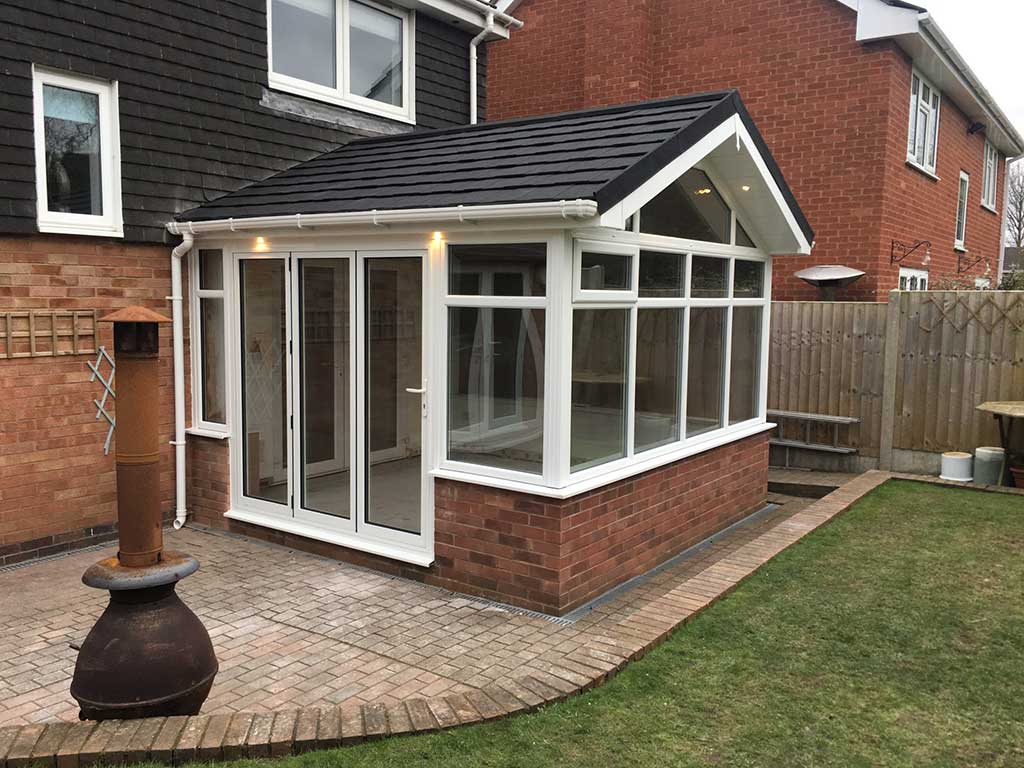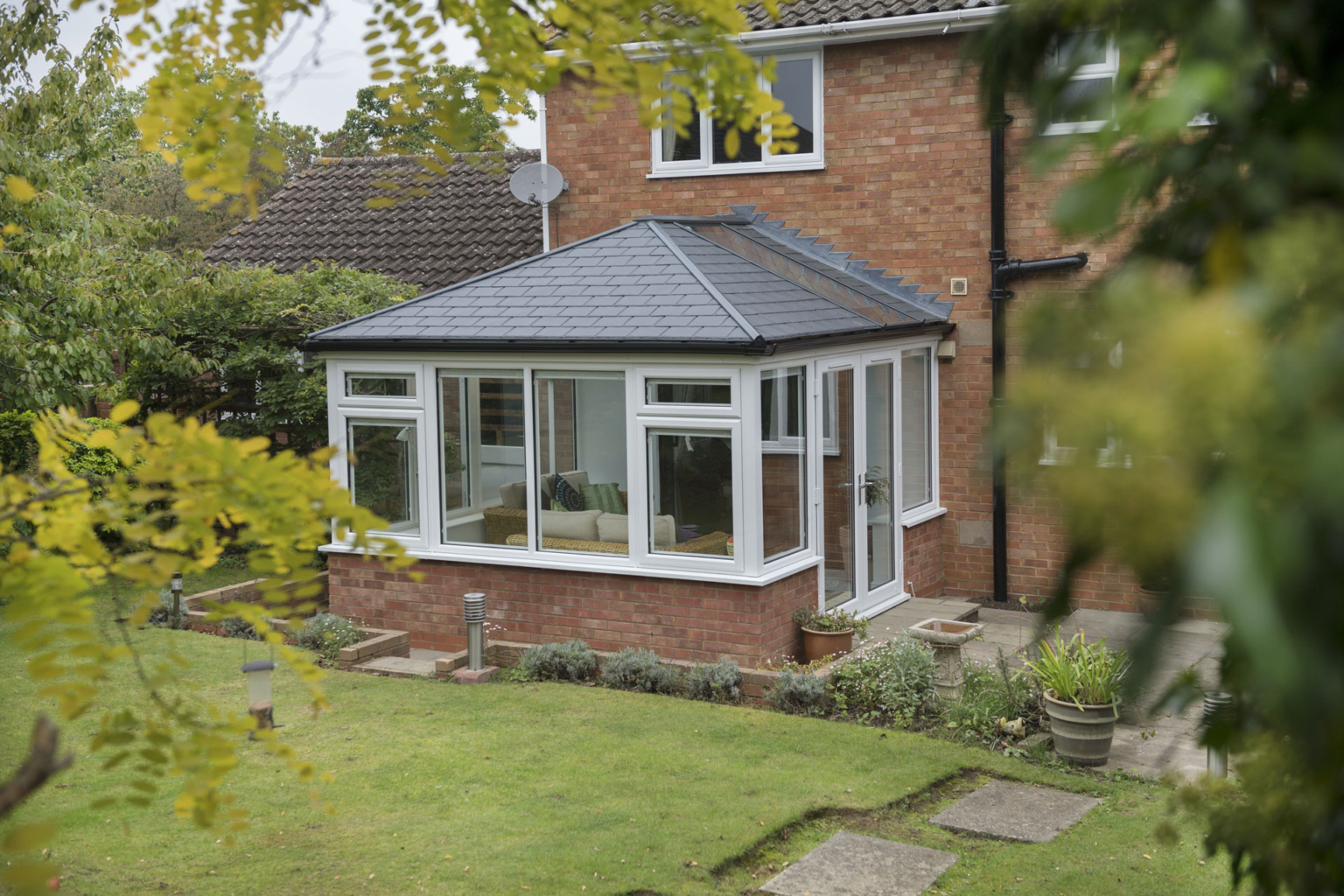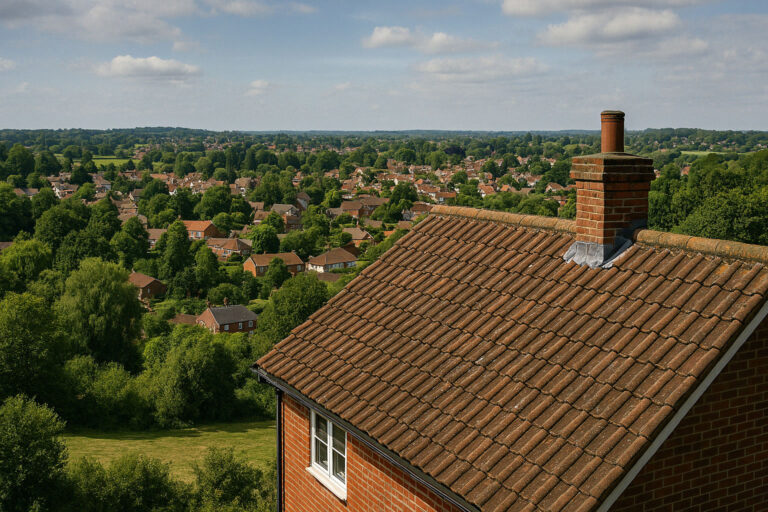Replacing a conservatory roof with tiles is becoming an increasingly popular option in the UK. Many homeowners want to transform their conservatories into more practical, year-round spaces. But is it possible? What are the benefits, challenges, and regulations involved? Let’s explore.
Why Replace a Conservatory Roof with Tiles?
A tiled roof offers several advantages over traditional glass or polycarbonate options:
- Improved insulation: Tiled roofs help retain heat in winter and keep the conservatory cooler in summer.
- Reduced noise: Tiles can significantly reduce noise from rain or outside traffic.
- Modern aesthetics: Tiled roofs can blend seamlessly with the rest of your home, enhancing curb appeal.
- Increased usability: A tiled roof can make the conservatory feel like a permanent part of your home, rather than a seasonal extension.
Example: A family in Birmingham replaced their polycarbonate conservatory roof with tiles and reported a 30% reduction in their winter heating bills.
Is It Legal to Replace a Conservatory Roof with Tiles?
Yes, you can replace a conservatory roof with tiles in the UK, but there are some important regulations to consider:
- Building regulations approval: Adding a tiled roof changes the structural weight of the conservatory. You’ll need approval to ensure the structure can handle the additional load.
- Planning permission: Usually, planning permission isn’t required if the conservatory is within permitted development rules. However, exceptions apply for listed buildings or conservation areas.
- Thermal performance standards: Building regulations require tiled roofs to meet specific insulation and energy efficiency standards.
Question: Have you checked whether your conservatory’s frame is strong enough to support a tiled roof?
Benefits of a Tiled Conservatory Roof
Homeowners who switch to a tiled conservatory roof enjoy several benefits:
- Energy efficiency: A tiled roof reduces heat loss, making the space more comfortable year-round.
- Durability: Tiles last longer than polycarbonate or glass, requiring less frequent maintenance or replacement.
- Value addition: A well-insulated, attractive conservatory can increase your home’s market value.
- Better acoustics: The reduced noise from rain or wind creates a quieter, more relaxing environment.
Example: In Manchester, a homeowner added a tiled roof to their conservatory and saw their property’s value increase by 10%.
Challenges to Consider
While tiled conservatory roofs offer many advantages, there are some challenges to address:
- Structural integrity: A tiled roof is heavier than glass or polycarbonate. The existing frame and foundations must be assessed and potentially reinforced.
- Cost: Tiled roofs are more expensive upfront, with costs ranging from £4,000 to £6,000 depending on size and materials.
- Light reduction: Tiled roofs block natural light, which can make the conservatory feel darker. Adding skylights can help.
- Ventilation: Proper ventilation must be incorporated to prevent condensation and dampness.
Question: Are you prepared to invest in structural upgrades if your current conservatory frame isn’t strong enough?

Types of Tiles for Conservatory Roofs
There are several options when choosing tiles for your conservatory roof:
- Lightweight tiles: Designed specifically for conservatory roofs, these tiles reduce the load on the structure.
- Concrete tiles: Durable and long-lasting but significantly heavier.
- Composite tiles: A blend of materials offering durability and a variety of styles.
- Slate tiles: Premium in appearance but may require extra structural support.
Example: A homeowner in Leeds opted for lightweight composite tiles that mimicked traditional slate, achieving both style and practicality.
Installation Process
Replacing a conservatory roof with tiles involves several steps:
- Initial assessment: A professional inspects the frame and foundations to ensure they can support the additional weight.
- Reinforcement: If needed, the structure is strengthened with steel supports or additional framing.
- Removal of old roof: The existing glass or polycarbonate panels are carefully removed.
- Installation of insulation: High-quality insulation is added to improve thermal performance.
- Fitting the tiles: The tiles are installed on a waterproof membrane and battens, ensuring a secure and weatherproof finish.
- Adding finishing touches: Features like gutters, skylights, and internal plastering are completed.
Question: Have you consulted with a roofing specialist to understand the scope of work involved?
Costs and Budgeting
The cost of replacing a conservatory roof with tiles varies based on size, materials, and labour:
- Small conservatories: From £4,000 to £5,000.
- Medium conservatories: Around £5,500 to £7,000.
- Large conservatories: £8,000 or more.
Additional expenses might include:
- Structural reinforcements: £500 to £1,500.
- Skylights: £500 to £1,000 per unit.
- Internal plastering and decoration: £1,000 to £2,000.
Example: A homeowner in Bristol spent £6,500 on a tiled roof conversion for their medium-sized conservatory, including two skylights.
Do Tiled Roofs Affect Conservatory Classification?
Adding a tiled roof may change how your conservatory is classified:
- Thermal efficiency: With a tiled roof, the conservatory may no longer be considered a “temporary” structure and might need to meet the same standards as other parts of the house.
- Council tax: In some cases, converting a conservatory into a permanent structure could impact your council tax band.
Question: Have you checked how a tiled roof might affect your conservatory’s legal classification?
Building Regulations and Compliance
Before starting the project, it’s essential to ensure compliance with building regulations:
- Structural safety: Approval ensures the frame can support the new roof.
- Insulation standards: The roof must meet U-value requirements for thermal efficiency.
- Fire safety: Materials must be fire-resistant and properly installed.
Hiring a professional contractor familiar with UK building regulations can simplify this process.
Example: A couple in Nottingham hired a certified installer who managed all the paperwork, ensuring their project met building regulations without delays.
Alternatives to Tiled Roofs
If a tiled roof doesn’t suit your needs, consider other options:
- Glass roofs: Modern glass roofs offer better insulation than older designs while maintaining natural light.
- Hybrid roofs: Combine solid panels with glazed sections for a balance of insulation and light.
- Polycarbonate roofs: A cost-effective option, though less durable and insulating than tiles.
Question: Could a hybrid roof offer the best of both worlds for your conservatory?
Final Thoughts
Replacing a conservatory roof with tiles is a significant investment but offers numerous benefits. Improved insulation, durability, and aesthetics can transform your conservatory into a more usable and comfortable space. Careful planning, compliance with regulations, and choosing the right materials will ensure the success of your project. Are you ready to upgrade your conservatory roof and unlock its full potential?







